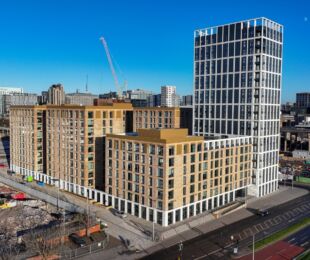
When it comes to building facilities for emergency services, especially something as vital as a fire training centre, there’s no room for compromise - especially not when it comes to compliance and regulatory standards. The £4-million transformation of the Portlethen Fire Training Centre into Scotland’s second largest facility is a shining example of how materials, particularly brickwork, play a central role in meeting and exceeding regulatory demands.
Let’s explore how this project balanced safety, function, and aesthetic cohesion, all while staying firmly on the right side of building regulations.
The Critical Role of Brickwork in Regulatory Compliance
In training environments where heat, structural integrity, and exposure to elements are all part of the design brief, the choice of brick is far from cosmetic. It’s a matter of regulatory necessity.
From fire resistance to water absorption, the bricks used in this build had to meet stringent standards laid out in British and European codes. The Portlethen project needed a product that could deliver:
-
High compressive strength
-
Low water absorption
-
Durability against frequent training use
-
Aesthetics suitable for a rural setting
-
Compatibility with steel and portal frame construction
Enter Forterra’s Butterley Granite Ash – the standout choice that ticked every box.
Meeting Structural and Safety Standards Head-On
One of the key structural requirements from engineers was that the bricks used could withstand high compressive loads. Given the nature of the buildings, multi-storey, with internal loads from stairs, equipment, and rescue simulations.
Butterley Granite Ash not only met the compressive strength requirements, but its low water absorption rate also made it compliant with regulations surrounding moisture resistance and durability, crucial for buildings that simulate firefighting and emergency flooding situations.
Durability and Fire Resistance in Training Environments
The three buildings on site; a commercial/industrial replica, a domestic replica, and a technical rescue structure, were designed for high-intensity use. That includes controlled smoke and heat exposure, which meant the external and internal materials needed to be highly fire-resistant and non-combustible.
Visual Cohesion Without Compromise
While functionality was key, the site also needed to sit comfortably within its rural context. Using the same brick across all three buildings ensured visual cohesion, but the team didn’t sacrifice compliance for aesthetics.
The natural distressed look of the Butterley Granite Ash brick achieved the architectural vision while fulfilling performance criteria. It harmonised with the local landscape and reflected the look of reclaimed materials, often favoured in conservation or rural planning zones.
A Material That Goes the Distance
From a regulatory point of view, longevity matters. The brickwork on this project wasn’t just about initial compliance, it had to be durable enough to stay compliant over decades of use.
Forterra’s product ensured that the external envelopes would be resilient against weathering, heat, and mechanical impact.
Compliance Is Built-In
The success of the Portlethen Fire Training Centre isn’t just in the architecture or layout - it’s in the compliance built into every detail. From material selection to engineering decisions, everything was driven by a need to meet or exceed the rigorous standards expected of emergency service infrastructure.
The choice of Butterley Granite Ash clay facing brick proved that it’s possible to combine regulatory compliance, structural strength, and aesthetic sensitivity, making it a textbook case for best practice in regulated construction.
Brick Bulletin | Feature 251






